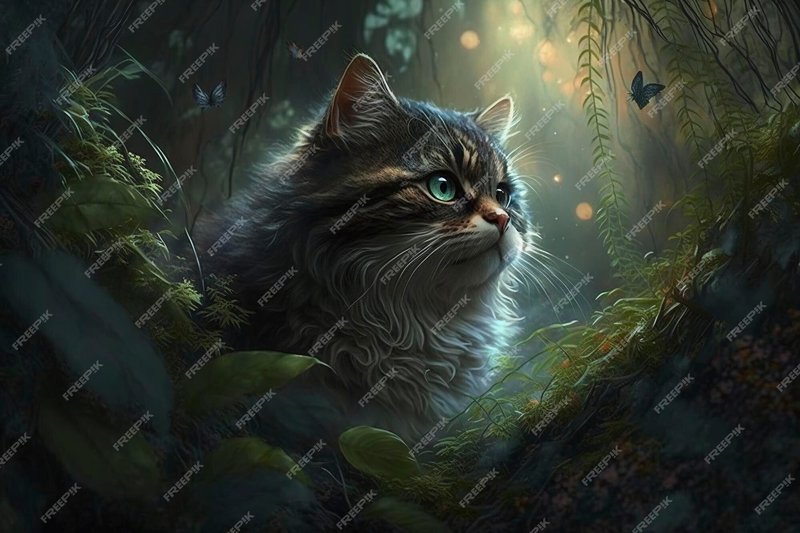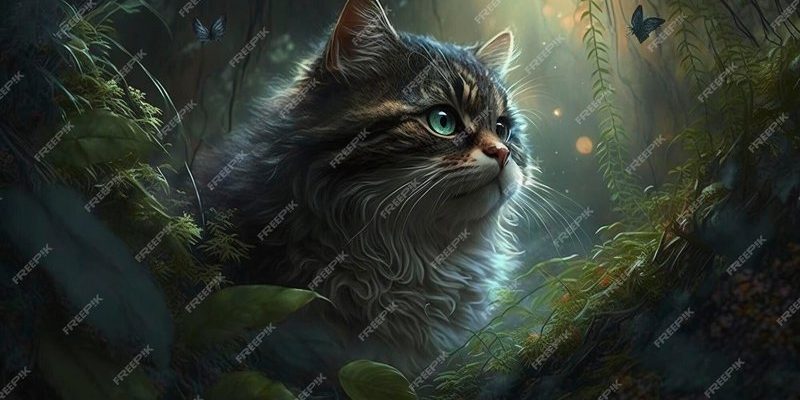
So, let’s grab a cup of coffee and unravel some of those common myths and misconceptions surrounding the jungle cat. It’s time to clear the air and get to the heart of what this incredible animal is really all about. You might be surprised at what you learn!
Myth 1: Jungle Cats Live Exclusively in Dense Forests
You might think that jungle cats only thrive in thick, tangled jungles. It’s a logical assumption, given their name, right? However, here’s the thing: jungle cats are quite adaptable. They prefer habitats that include a variety of landscapes, from wetlands to grasslands, and yes, even scrub forests.
In fact, these cats are often spotted in areas near rivers and marshes. They have a strong affinity for water—part of their hunting strategy involves catching fish and amphibians. Picture them stealthily stalking through tall grasses or wading into shallow waters. As a result, their range extends well beyond just what we think of as a “jungle.”
Myth 2: Jungle Cats Are Aggressive and Dangerous
It’s easy to assume that a wild cat is a dangerous adversary, especially when they’re associated with agile hunting skills. But while jungle cats are skilled predators, they typically shy away from human interaction. Honestly, they’re more interested in avoiding us than engaging in any sort of confrontation.
Jungle cats are relatively small, weighing between 8 to 15 pounds. They rely on their stealth and agility, much like a well-trained magician who prefers to vanish into thin air rather than confront an audience. Most encounters with these cats end in them darting away into the underbrush. They won’t be attacking your camping trip anytime soon!
Myth 3: Jungle Cats Are Domestic Cats’ Wild Relatives
Another common misconception is that jungle cats are just wild versions of domestic cats. Sure, they share a family, but it’s not quite that simple. Let me explain: while jungle cats belong to the same genus (*Felis*), they are distinctly different species with unique behaviors and habitats.
For instance, domestic cats have been bred for thousands of years for companionship, whereas jungle cats are true wild animals. Their instincts drive them to hunt and survive in the wild, where they have developed skills specifically for their environment. So, while they may share some traits—like a love for naps and a penchant for roaming—their lifestyles couldn’t be more different.
Myth 4: Jungle Cats are Easily Domesticated
Since we’ve talked about the similarities and differences between jungle cats and domestic cats, you might wonder if you could keep a jungle cat as a pet. Spoiler alert: it’s not a great idea. Jungle cats are not domesticated and do not have the same social structures as pet cats.
These cats thrive in their natural habitats, where they can hunt and explore. Bringing one into a home would be akin to trying to fit a square peg in a round hole. They would struggle with confinement and lack of stimulation, leading to stress and potential behavioral issues. Simply put, jungle cats belong in the wild, not in a living room.
Myth 5: Jungle Cats Are Threatened by Human Activities
You might think that jungle cats face imminent extinction due to habitat loss and hunting. While it’s true that human activities have an impact, the situation isn’t as dire as it seems. Unlike many other wild cat species, jungle cats have a wider range and are found in several countries across Asia and parts of Africa.
However, it’s important to recognize that they are still vulnerable to certain threats such as habitat destruction and climate change. Conservation efforts are crucial for protecting their habitats and ensuring their survival. Think of it like maintaining a balanced ecosystem—every piece plays a role, and losing one could disrupt the entire system.
Myth 6: Jungle Cats Are Solitary and Anti-Social
You may have heard that jungle cats prefer solitude and avoid forming social bonds. While they do enjoy their peace and quiet, it’s not entirely accurate to label them as anti-social. They can be quite social, especially during mating season, when males and females come together.
Interestingly, they communicate with one another using a range of vocalizations, body language, and scent markings. These cats have their own social structures and territories, which they defend diligently. Imagine it as a neighborhood where they’re aware of each other’s presence but still prefer their own space most times.
Myth 7: Jungle Cats Are Just Miniature Tigers
Last but not least, some people may think jungle cats are simply smaller versions of tigers. While they might share similarities in appearance, such as stripes and a sleek body, they are entirely different species with their own unique traits. Tigers are significantly larger and are apex predators, while jungle cats are small, agile hunters that typically prey on rodents, birds, and small reptiles.
It’s like comparing a sports car to a pickup truck—both are vehicles, but they serve different purposes and operate in their own ways. So while jungle cats may look fierce, they’re not mini tigers, and they’re certainly not the top of the food chain.
The jungle cat is a remarkable creature, surrounded by myths and misconceptions that can cloud our understanding of its true nature. By debunking these myths, we can appreciate the jungle cat for what it is: a unique and adaptable animal that plays an essential role in its ecosystem.
Next time you hear a story about jungle cats, remember the facts we’ve discussed. They’re not just wild versions of our furry friends, nor are they the dangerous predators some might assume. Instead, they’re fascinating, adaptable, and, above all, a vital part of the wildlife tapestry that deserves our respect and protection. So let’s celebrate the jungle cat, and continue learning more about these incredible animals and their habitats!

